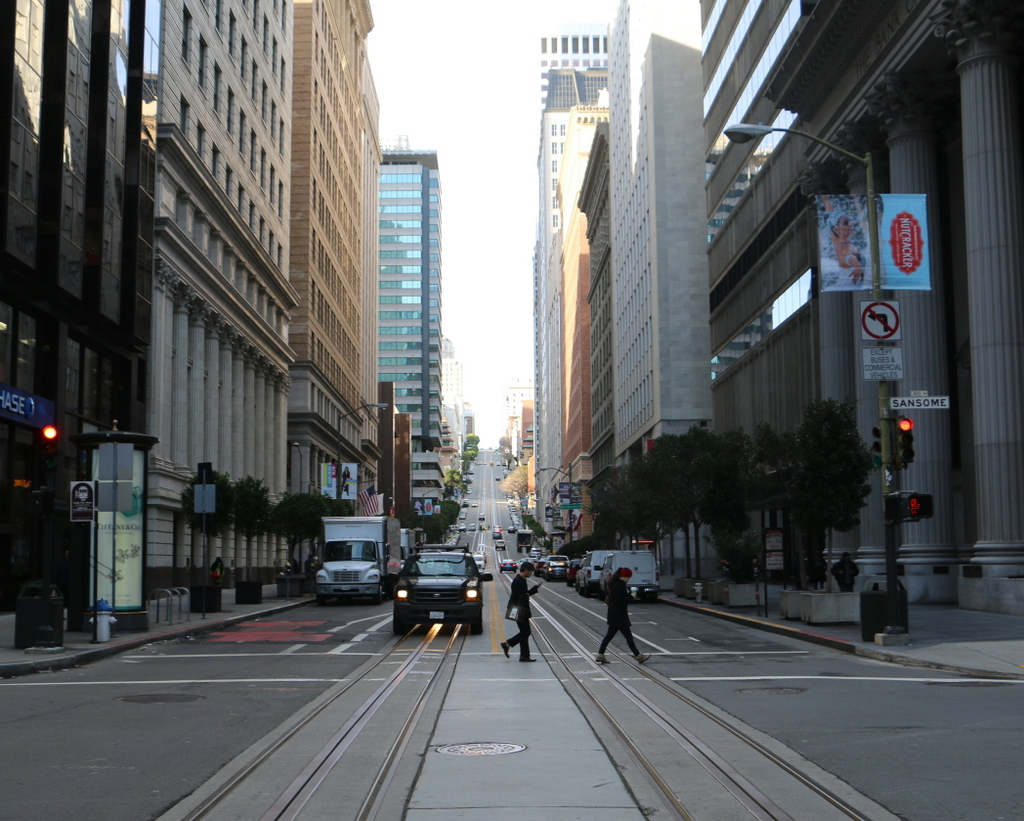The Palace Hotel, seen from the corner of Market and Montgomery Streets as it burned on April 18, 1906, in the aftermath of the earthquake. Image courtesy of the Library of Congress.
The scene in 2015:

As explained in an earlier post, the Palace Hotel was San Francisco’s premiere hotel from when it opened in 1875 until its destruction in 1906. Like so many other buildings across the city, the hotel survived the earthquake itself with minimal damage, but fires soon began to spread throughout the city. Once they reached the hotel, the substantial amount of wood paneling inside allowed the flames to quickly engulf the entire building, as seen in the first photo. In the foreground, soldiers stand guard on Market Street, watching helplessly as one of the city’s most prominent landmarks was gutted by fire.
The view in this post, taken facing the opposite direction on Market Street, shows the burned-out remains of the hotel after the fire. It was soon demolished, and in 1909 the present-day Palace Hotel opened on the same spot. There is one building left standing from the first photo, though. Barely visible on the far right of the photo is the Monadnock Building, which was still under construction at the time of the earthquake. It survived the fires, and was completed the following year.
This post is part of a series of photos that I took in California this past winter. Click here to see the other posts in the “Lost New England Goes West” series.











